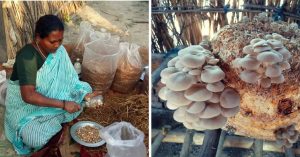Weeks after Former CM Jayalalithaa’s Demise, Amma Canteens Continue to Bring Cheer and Hope
Tamil Nadu’s former Chief Minister Jayalalithaa was a controversial figure, with opinions about her sharply divided. However, she was loved by the masses, thanks in great measure to populist initiatives like the Amma Unavagams (Amma Canteens).
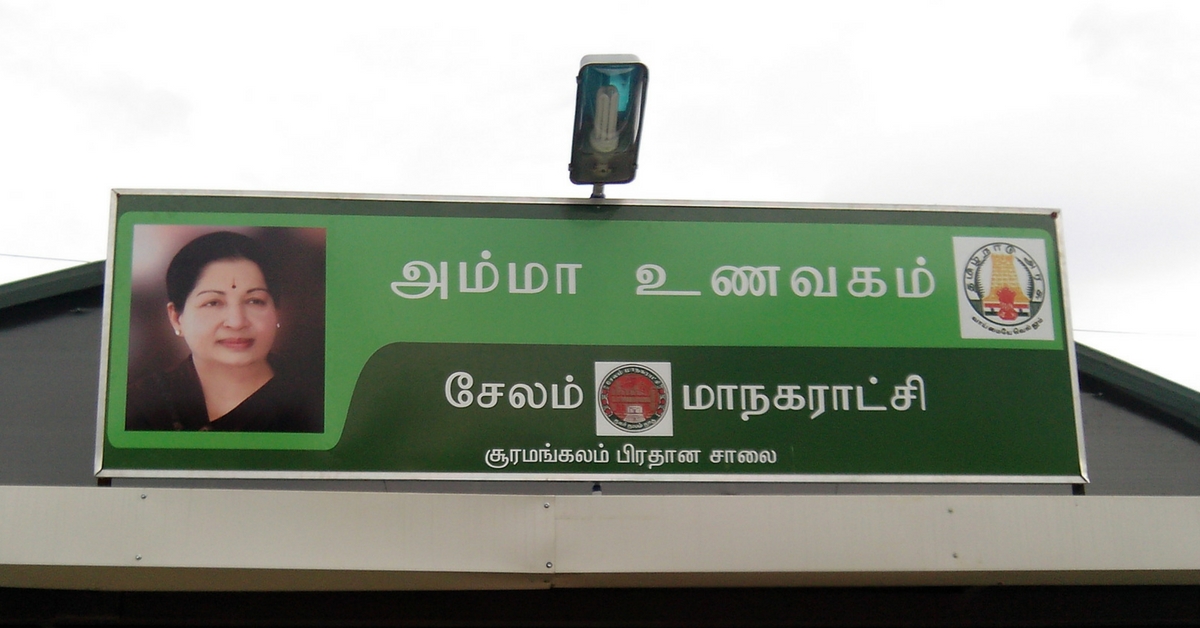
Tamil Nadu’s former Chief Minister Jayalalithaa was a controversial figure, with opinions about her sharply divided. However, she was loved by the masses, thanks in great measure to populist initiatives like the Amma Unavagams (Amma Canteens).
In Tamil Nadu, former Chief Minister Jayalalithaa’s posthumous omnipresence is best reflected in the success of the 657 Amma Unavagams (canteens) that serve piping hot fare at unbelievably low rates to anyone who walks in looking for a satisfying meal. These canteens provide-barrier free access and are managed efficiently by a dedicated, diligent, and disciplined army of women. Some even wake up at the crack of dawn and start cooking in the canteen kitchens at 5 am so that people can line up at the serving windows with their coupons for breakfast by 7 am.
People in Chennai believe that Jayalalithaa, who served as Tamil Nadu’s Chief Minister four times and came to be addressed as “Amma”, won the hearts of the poor by ensuring that they receive their basic meals with dignity, for a song.
This popular social scheme, launched by Jayalalithaa in February 2013 to help the impoverished fight food inflation, contributed to AIADMK’s stunning victory in the 2014 Lok Sabha polls, and to her re-election in the 2016 Assembly polls, which turned out to be her last electoral outing.
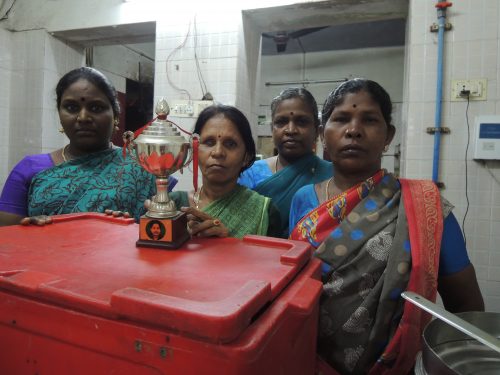
The Amma canteens open for service daily from 7 am to 10 am, noon to 3 pm, and then from 6 pm to 9 pm. The price list, penned in Tamil on a green board at the entrance, is extremely inviting: idli (a south Indian staple steamed rice cake) costs Re. 1, curd rice costs Rs. 3, while lemon rice and sambar rice come at Rs 5. Those keen on rotis can have their fill of six chapattis with sambar at Rs 9. Each canteen, on an average, feeds almost 500 people a day in three shifts. A rectangular room serves as the canteen area, with a granite table top extending from one corner of the tiled wall to the other. Amma’s portrait, garlanded in some canteens, is given the pride of place at the entrance or on the wall. Three women are pressed into serving food.
During the seven-day mourning announced by the State Government after Jayalalithaa’s demise, food was served free at the canteens, adding to the crowds. At the Lloyds Road Amma canteen, within walking distance from the AIADMK party headquarters in Royapettah, Lilawati, 35, who is only able to see from one eye, smiles and remembers Amma as she doles out piping hot sambar at the counter. She acknowledges emotionally how she is able to live a decent life, thanks to her job that brings in a steady monthly salary of Rs. 9,000. For this woman, neither Jayalalithaa’s vast personal wealth nor the corruption cases against her matter in the least.
To her, “Amma” continues to be the “anna data” who has given them a new lease of life.
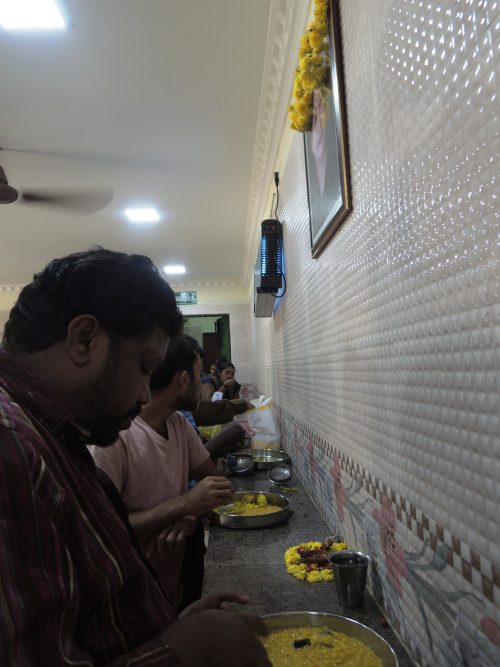
Such was her popularity that, according to Vaasanthi, Jayalalithaa’s biographer, although the leader made rare stage appearances during her campaigns to address crowds, when she did, people would sit for hours in the sun to catch a glimpse of their thanga thalaivi (golden leader). The many sops she announced include financial assistance of Rs. 18,000 to pregnant women, and eight grams of gold and Rs. 50,000 cash at the time of a daughter’s wedding.
Thiru E. Maran, a businessman who has a restaurant in a food court in IT Park and lives in front of the Lloyds Road Amma Canteen, cannot help but appreciate the well-intentioned initiative, “A poor person can survive on Rs. 20 and have three meals a day in these canteens.” In addition, these establishments also generate viable employment – whereas the smaller canteens employ 10-13 women, the bigger ones, housed in hospitals, employ 25. This drove Jayalalithaa’s reputation as Purathi Thalaivi (a revolutionary leader), as well as her huge following.
Her most powerful constituency was women, a vote-bank that solidly backed her.
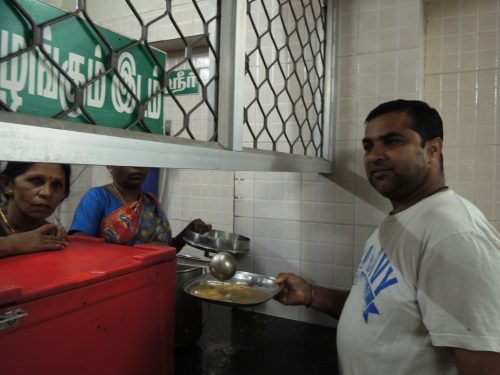
At the canteen on Greenways Road in Ariyar, which has a hand-washing area, a bathroom, and a fire extinguisher, Lata, a middle-aged widow employed there, happily shares the quick-and-easy lemon rice recipe, before she candidly shares, “Were it not for this canteen, I don’t know how I would have supported my teenage daughters. My husband, an auto mechanic, committed suicide. We moved from Mumbai to Chennai as I have relatives here. Working at the canteen has helped me rebuild my life and ensure my girls got an education that will make their future secure.”
Managed solely by women, this canteen, like the others, runs very efficiently. A proper division of work entails washing service dishes and cooking utensils besides preparing and serving meals.
Lata and her colleague, Muttami, seem to display good team spirit as they explain to me this daily work routine.
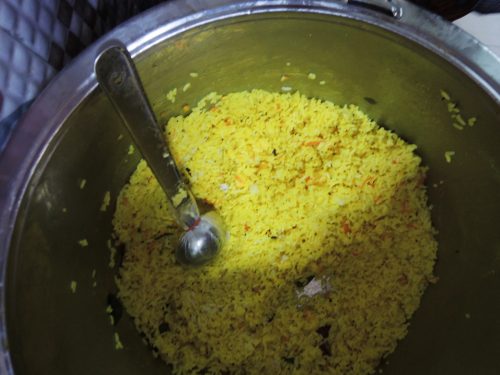
Hailing Amma canteens and Amma pharmacies – where the poor can buy medicines for as good as free – senior political analyst T.R. Ramachandran says, “The canteens have created a revolution of sorts, and they did not cost the exchequer much. Women voters outnumber men in Tamil Nadu, and the success of these programmes contributed in good measure to Jayalalithaa’s electoral successes. In fact, she was able to increase her party’s vote share from 30 % to 39 %. I am certain that these schemes will continue.”
People across the social spectrum frequent Amma Canteens. Violet, a 32-year-old Tamil Christian working as a Guest Relations Associate with a Radisson Blu Hotel in Egmore, says that she has occasionally eaten at the Amma Canteen on Lloyds Road. Gopi Nath, a 29-year -old executive with a private firm, likes to have his breakfast there every day. “The food is good. I have three idlis for three rupees, and Pongal for five rupees. This helps me save money as I earn a modest Rs. 25,000 per month.” Likewise, Satish Raj, a 24-year-old Customer Relations Officer in Tata Consultancy Services, says he eats food regularly in the Amma canteen in Tyenampet.
He adds that the canteen, located in front of a low-income group government residential complex, is a blessing for residents.
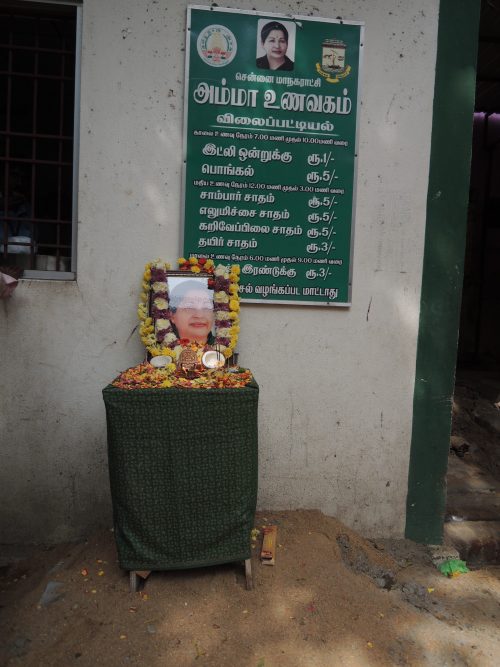
AIADMK spokesperson C.R. Saraswathi is confident that these canteens, a cherished legacy, “will run forever”. She says, “We will always take care of these canteens. We employ thousands of women here, and can’t let them down.” Saraswathi adds that all party workers and supporters ate at the Amma canteen two buildings away from the Apollo hospital while Jayalalithaa was there for more than 70 days.
Amma’s canteens may have started as a political strategy. Now, in Jayalalithaa’s absence, they are fond, reverential legacies for those who work and tuck in at these public kitchens.
To read more articles like this, check out the website of the Women’s Feature Service.
Featured Image Source: By Thamizhpparithi Maari (Own work) [CC BY-SA 3.0], via Wikimedia Commons
Like this story? Or have something to share? Write to us: [email protected], or connect with us on Facebook and Twitter.
NEW: Click here to get positive news on WhatsApp!
This story made me
- 97
- 121
- 89
- 167
Tell Us More
We bring stories straight from the heart of India, to inspire millions and create a wave of impact. Our positive movement is growing bigger everyday, and we would love for you to join it.
Please contribute whatever you can, every little penny helps our team in bringing you more stories that support dreams and spread hope.






